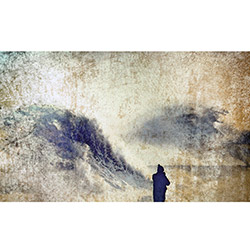
Four chamber pieces for strings, covering 5 decades of work by veteran German composer Ernstalbrecht Stiebler--each with his representative focus on concentration and quiet intensity--recorded in Bulgaria and performed by violinist Biliana Voutchkova, to whom two of the pieces are dedicated, with Michael Rauter (cello) and Nurit Stark (viola).
Out of Stock
Quantity in Basket: None
Log In to use our Wish List
Shipping Weight: 3.00 units
Sample The Album:
Ernstalbrecht Stiebler-composer
Biliana Voutchkova-violin
Michael Rauter-cello
Nurit Stark-viola
Click an artist name above to see in-stock items for that artist.
Label: Another Timbre
Catalog ID: at155
Squidco Product Code: 29310
Format: CD
Condition: New
Released: 2020
Country: UK
Packaging: Cardboard Gatefold
Recorded at studio 1, at Bulgarian National Radio, in Sofia, Bulgaria, on July 1st, 2nd and 3rd, 2019, by Atanas Kopchev.
Interview with Ernstalbrecht Stiebler
I discovered your music in the mid-90's thanks to the Hat Art label, and was impressed by its quiet soundworld. How would you say your music has changed or developed since that time?
ES: I think my music now is more concentrated, in a sense even more minimal, with fewer tones, and creating a deeper sound space (I hope!)
Since the mid-90's an appreciation of quietude has become more widespread, with, for example, the emergence of the Wandelweiser collective, 'lowercase improvisation', and a big upsurge of interest in Feldman's music. Do you feel a close affinity with those movements, or have you remained aside from that?
ES: I certainly feel close to the movements that you mention, but in the same way as with family relatives where you can also have differences, sometimes very subtle ones. Feldman and Scelsi are very important for me, though perhaps I have developed in a slightly different direction - an inner development looking for a larger traditional frame, with octaves, fifths, elements of tonality, all within a minimal structure.
In relation to the CD, I feel that there is a striking but interesting contrast in style between the 1963 trio piece (Extension für Streichtrio) and the more recent pieces that date from 40-50 years later. Do you feel the same sense of contrast?
ES: Not really, no. For me the pieces feel inwardly similar. For example, the long repetitions in 'Extension' still feel very close to me now - and they were avant-garde at that time. The expressiveness and sensitivity that is evident in 'Extension' is for me an aspect of youth - and I accept this without feeling any inner distance. So, for example, the tremolos in 'Extension' are not something that I've continued using in later pieces, but the inner feeling is the same, and the repetitions and sense of concentration are there in all of the pieces, I think. For me the pieces from both periods demonstrate an inner connection - even at 86 years old I am bit young, a bit - but also perhaps I am a 'traditionalist' (not a 'modernsky').
Interview with Biliana Voutchkova
How did you first meet Ernstalbrecht?
BV: Ernstalbrecht was the first composer I started working with in Berlin, in 2007, even before I moved to the city in 2008. He was already working with my dear colleague and friend, the cellist Agnieszka Dziubak, who first introduced us to each other. We met while we were working on the new violin and cello duo '4 Parallelen', which we premiered in 2008. The relationship strengthened, we kept in touch and became friends with an open mutual interest in continuing our work together.
How did this CD project come about?
BV: I walked a long pathway to get to this release. Me and Ernstalbrecht often spoke about a new violin solo, and in 2015 he surprised me with a phone call telling me that he had written "Für Biliana". He said he'd like to meet up for a first read through. I was really touched, and I loved the piece right away. Shortly after playing the premiere, Ernstalbrecht was motivated to write another solo for me, presenting a different set of ideas. So "Glissando" was born in 2016, and it hasn't even had its live premiere yet...
In 2018 I had the enormous pleasure of discovering and playing the string trio 'Extension' at a concert of Solistenensemble Kaleidoskop. I played it with Michael Rauter and Nurit Stark, and this is the trio which recorded it for the CD. The piece was part of a programme which included other larger, newer string ensemble works. It was like a jewel in the midst of the evening, a memorable collaboration for our trio and Ernstalbrecht.
That evening I felt a first strong impulse to find a way to record and produce a CD including the trio and the other pieces. I worked hard for two years to find a good studio for the recordings, to keep the group and the repertoire as I envisioned them, and to find the right label for the release. I couldn't be happier that this is now a reality. My gratitude is endless for the best outcome I could have possibly wished for.
As I said to Ernstalbrecht, I feel that there is a big contrast in style between 'Extension' and the more recent pieces. How does this contrast strike you, and why did you want to present the two together on a single disc?
BV: The contrast between the old and newer compositions is fascinating but for me actually not too marked or obvious. I can hear the same strong individual voice, the reduction of means, the repetition and re-occurrence of certain intervals as elements in all the pieces. In the later pieces one can sense a lot more patience, continuity without need of change, stretching the form to more extremes (especially in the '4 Parallelen' duo), while more surprises, outbursts, different "sections" and sharp curves are evident in the early trio. Of course, all of it presented with great elegance, Stiebler-style.
As I said earlier, the idea of releasing the selected pieces on a single disc came to me in relation to the 'Extension' trio, the last of the works that I discovered. It was the cherry on top of the cake, the missing part needed to complete a fabulous composer's portrait with masterpieces embracing a period of over 50 years. Pieces that I love playing and hearing, and which make sense dramaturgically to me as a whole - and pieces that have never been released before, except for one recording of the trio by Ensemble Recherche many years ago.
The music was recorded at Bulgarian National Radio, the country you come from. Could you tell us about your experiences growing up there and if that has affected your approach to new and experimental music?
BV: Oh well, this has to be a full interview if I want to say everything about it. Musically speaking, growing up in Bulgaria everything was related only to classical music. In the full-time music school where I was enrolled from age 5, there was strong emphasis on preparation for the professional classical music world. I am grateful for this education and the early start that placed me on stage as a soloist from a very early age. With some luck, I took this career to the maximum possible level by the time I was 17-18 years old. But I was hungry to discover more, to grow further, longing to find out what else be. This was communist Bulgaria, pre-internet times, and we had absolutely no information about the world of new and experimental music. Mavericks such as John Cage, Morton Feldman, György Ligeti etc. were completely unknown to me, to all of us in music school - not to mention leading figures from other musical genres. I did hear some records which somehow found their way into the country through magical pathways, most of them coming from the jazz world - Eric Dolphy or Miles Davis for example. Anyway, I intuitively knew that I needed to move further and, being lucky again, in 1991 I found myself in the USA where I completed my further education immediately after my high school graduation. There I searched and slowly discovered the wide, vibrant, colourful, multi-genre world of new music, in all its endless and creative forms. It was mind-blowing, and so satisfying. After a few years, in New York City, where I did my Masters, I began to understand something of my calling. I started improvising and consciously decided to pursue a career in contemporary / experimental music. It was and is a path that came entirely naturally to me, and one that keeps me alert and ever open towards new and unknown territories.

The Squid's Ear!
Artist Biographies
• Show Bio for Ernstalbrecht Stiebler "Ernstalbrecht Stiebler. Berlin, Germany, 1934. Composer • Performer (piano) Ernstalbrecht Stiebler (born March 29, 1934, Berlin). Esteemed German composer of mostly chamber, choral, piano, and organ works that have been performed throughout Europe and elsewhere. Mr. Stiebler studied composition and piano at the Musikhochschule Hamburg, but had more important lessons at Darmstadt from 1958-61, including studies with Karlheinz Stockhausen in 1959. His honors include the Bach-Preis Hamburg (1966) and a prize from the Stille Musik composition seminar in the Künstlerhaus Boswil (1991). Moreover, two of his productions for Hessischer Rundfunk received the Prix Italia Special Prize: Piece for Peace by Alvin Curran and Die Blinden by Walter Zimmermann. Mr. Stiebler is also active in other positions. He served as director of new music for Hessischer Rundfunk from 1969-95 and founded the concert series Forum Neue Musik there in 1989. He co-produced numerous CDs for Hessischer Rundfunk in collaboration with the Hat Hut label, including the series devoted to the New York School (John Cage, Morton Feldman and Christian Wolff). In addition, he has written numerous essays for Musik-Konzepte, MusikTexte and other music journals, as well as booklet notes for the Montaigne Auvidis CD of Words and Music by Morton Feldman." ^ Hide Bio for Ernstalbrecht Stiebler • Show Bio for Biliana Voutchkova "Biliana Voutchkova is a dedicated, thoroughly engaged composer-performer whose work combines regular performances of major solo violin/ensemble works and new works by contemporary composers often written for her, improvisation and performance work reaching into the realm of dance and movement. Her constant research as a creative artist spans the widest possible range of sound and movement and extends her sonic, physical and technical capacities evolving into the development of a highly individual artistic musical language. Biliana is a risk taker approaching contemporary classical repertoire with the same inspiration and freedom characteristic of her forceful improvisations. She collaborates with an international pool of renowned artists - among those are Mazen Kerbaj, Audrey Chen, Ute Wassermann, Iva Bittová, Robin Hayward, Jacques Demierre, Matthias Bauer, Frances-Marie Uitti, Séverine Ballon, Helmut Lachenmann, Michael Thieke, Hans Peter Kuhn, George Lewis, Georg Nussbaumer, Clayton Thomas, Axel Dörner, Peter Ablinger and many others. Biliana has been heard at festivals and concert series worldwide, her appearances ranging from celebrated concert venues such as Carnegie Hall in New York, the Berliner Philharmonie and Radial System V in Berlin, and Suntory Hall in Tokyo, to performances in the most vivid experimental places such as Kule/Labor sonor, Ausland, Quite Cue, Studio 8 and Exploratorium in Berlin, Saal 100 in Amsterdam, and the Knitting Factory in New York. After her 14 years long residence in the USA, Biliana now lives in Berlin and collaborates with the Splitter Orchestra, Solistenensemble Kaleidoskop, Ensemble Modern, Zeitkratzer, Work in Progress, Ensembles United Berlin, Mosaik, LUX:NM and others. She is the co-founder of her dance/music group GRAPESHADE and OSM (open sound & movement collective). Her recent/current projects include solo concerts at the Huddersfield Contemporary Music Festival, MuseRuole Festival, Radar Festval, Radialsystem V and Unerhörte Musik, concert appearance with Iva Bittová and Phil Minton, the solo portrait concert/presentation and the project "Gazes that matter" at Ballhaus Naunynstrasse, the performance of Alban Berg's chamber concerto for the March Music Days Festival, the concert tour in Bulgaria/Serbia with Voutchkova/Thieke duo supported by the Goethe Institut and performances for the festivals Klangwerkstatt, Jazzfest and Faithful in Berlin, Blurred Edges in Hamburg, Rainy Days in Luxemburg and Klarafestival in Brüssel. Born in the family of musicians, Biliana Voutchkova begins playing violin at the age of four, makes her orchestra debut at the age of nine, and records her first CD for the Japanese label Crown Record Ltd. at the age of sixteen. She studies classical violin, in her college years starts being involved with the contemporary and improvised music scene in New York. Among her teachers are Peter Arnaoudov, Abram Stern and Felix Galimir. Ms. Voutchkova holds degrees from the University of Southern California and New School for Social Research/Mannes College of Music in New York (MM in music). She has received top honors at the Kozian International Music Competition, CRS National Competition for Performing Artists, and Music and the Earth International Contemporary Music Competition. At the age of nineteen, she was invited to the United States, and was presented the special Jasha Heifetz Violin Scholarshipfor for her studies at the University of Southern California. After her move to New York in 1995 her continuous interest and exploration of the music of today remains being a major part of her work. " ^ Hide Bio for Biliana Voutchkova • Show Bio for Michael Rauter "Michael Rauter, born 1980 in Basel, is a Berlin based music theatre maker, composer, performer and cellist. In 2006 he founded the music theatre group Solistenensemble Kaleidoskop and was its artistic director until 2016. Since 2018 he creates music theatre and performance pieces with his label Bob's Company. He has collaborated with artists like Benjamin van Bebber, Boogaerdt/Van der Schoot, Alexander Charim, Laurent Chétouane, Aliénor Dauchez, Luigi de Angelis, Martin Eder, Sabrina Hölzer, Susanne Kennedy, Mouse on Mars, Georg Nussbaumer, Peaches, Sasha Waltz & Guests, Ladislav Zajac among others. From 2018-20 he is artist of the fellowship program #bebeethoven, a project of the PODIUM Esslingen for the Beethoven anniversary 2020, funded by the Federal Cultural Foundation. As part of this program, he cooperates with Operadagen Rotterdam, where he presented the music theatre END OF THE STORY in 2018 and the solo performance THE GAP in 2019. Upcoming projects include the music theatre installation PIXELSINFONIE at Ludwigsburger Schlossfestspiele in May 2020 and the music theatre ABSCHIED with Solistenensemble Kaleidoskop at Festspielhaus Hellerau in October 2020." ^ Hide Bio for Michael Rauter • Show Bio for Nurit Stark "The Israeli violinist and violist Nurit Stark studied at the Rubin Academy Tel Aviv with Haim Taub, at the Juilliard School New York with Robert Mann, Musikhochschule Cologne with the Alban Berg Quartet and at Universität der Künste Berlin with Ilan Gronich where she graduated from her master studies.She has made solo appearances with orchestras such as the Israel Philharmonic under Zubin Mehta, Münchner Radio Orchestra under Dmitry Sitkovetsky, Bremen Philharmonic, Sao Paolo Symphonic Orchestra, the Lithuanian Chamber Orchestra, Chamber Orchestra of Mantova and the South-West German chamber orchestra Pforzheim. Her love and dedication for contemporary music has led her to perform many world premieres and to collaborate with composers such as Sofia Gubaidulina, György Kurtag, Viktor Suslin, Valentin Silvestrov, Georg Nussbaumer, Deirdre Gribbin and Ernstalbrecht Stiebler. Since 2005, Nurit Stark has been taking part in avant-garde stage projects in theaters such as Schaubuehne Berlin, Volksbuehne Berlin, State Theatre Stuttgart, Bobigny Paris, Burgtheater Vienna, Kammerspiele Munich and Le Maillon Strasbourg, developing performances which integrate elements of music and theatre. She has recorded works by Feruccio Busoni, George Enescu, Clara & Robert Schumann for violin / viola and piano with Cedric Pescia for Claves Records and chamber works by Olivier Messiaen for Genuin Records. For BIS records she has recorded chamber works by Viktor Suslin and Sofia Gubaidulina and "Kafka Fragments" by György Kurtag with Caroline Melzer. Her latest recording of works by Ernest Bloch for violin and piano together with Cedric Pescia appeared in January 2018. Nurit Stark plays a 1710 Pietro Guarneri Violin from Mantua." ^ Hide Bio for Nurit Stark
11/20/2024
Have a better biography or biography source? Please Contact Us so that we can update this biography.
11/20/2024
Have a better biography or biography source? Please Contact Us so that we can update this biography.
11/20/2024
Have a better biography or biography source? Please Contact Us so that we can update this biography.
11/20/2024
Have a better biography or biography source? Please Contact Us so that we can update this biography.
Track Listing:
1. Fur Biliana 6:03
2. Glissando Fur Solo Violine 8:56
3. Extension Fur Streichtrio 18:55
4. Duo 4 / Parallelen 21:15
Compositional Forms
Stringed Instruments
Trio Recordings
Ambient & Minimal Music
New in Compositional Music
Search for other titles on the label:
Another Timbre.

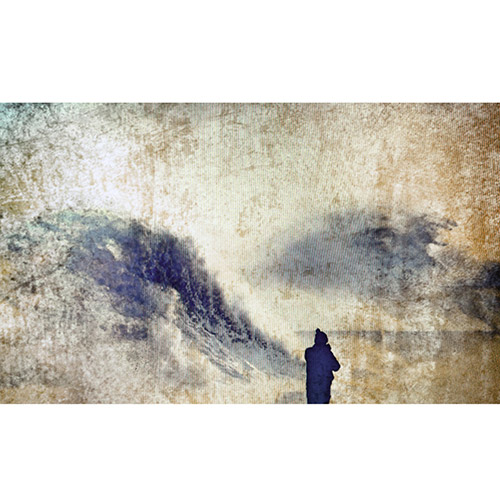




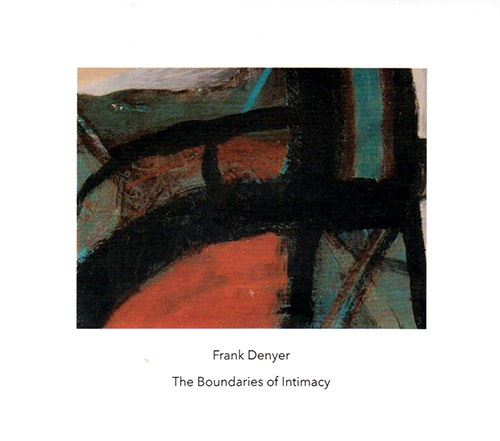
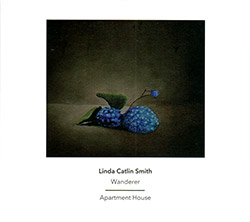



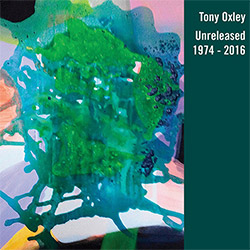


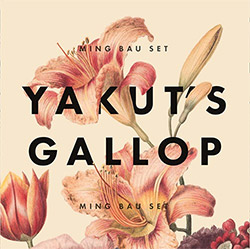







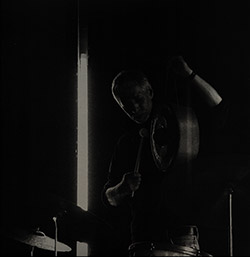



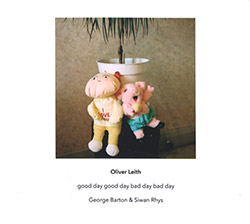
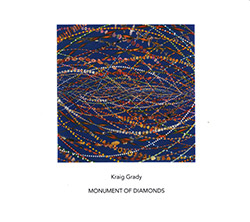


![Guy, Barry / Ken Vandermark: Occasional Poems [2 CDs]](https://www.teuthida.com/productImages/misc4/34849.jpg)
![Novoa / Carter / Mela Trio: Vol.1 [VINYL]](https://www.teuthida.com/productImages/misc4/35236.jpg)


![Elephant9 : Mythical River [VINYL]](https://www.teuthida.com/productImages/misc4/34624.jpg)
![Evans, Peter (Evans / Eldh / Black): Extra [VINYL]](https://www.teuthida.com/productImages/misc4/35279.jpg)

![McPhee, Joe: Straight Up, Without Wings [BOOK]](https://www.teuthida.com/productImages/misc4/35454.jpg)
![Jeck, Philip: rpm [2 CDs]](https://www.teuthida.com/productImages/misc4/35455.jpg)













![Barker / Parker / Irabagon: Bakunawa [VINYL]](https://www.teuthida.com/productImages/misc4/35533.jpg)
![Blaser, Samuel / Marc Ducret / Peter Bruun: Dark Was The Night, Cold Was The Ground [VINYL 10-inch]](https://www.teuthida.com/productImages/misc4/35492.jpg)








![Warren, Kenny (Warren / Hoffman / Ellman): Sweet World [VINYL]](https://www.teuthida.com/productImages/misc4/35451.jpg)




![Blake, Ran / Dave Knife Fabris: Live Amsterdam 2006, First Visit [CD + POSTCARDS]](https://www.teuthida.com/productImages/misc4/35275.jpg)













![DNS: Taking Big Bites Of The Khandas Three Cafes Deep [2 CDs]](https://www.teuthida.com/productImages/misc4/35334.jpg)




![Cleaver, Gerald: The Process [VINYL]](https://www.teuthida.com/productImages/misc4/34966.jpg)




![Alva Noto: HYbr:ID II [VINYL 2 LPs]](https://www.teuthida.com/productImages/misc4/35201.jpg)

![Baron, Derek / Luke Martin: Distinct and Concealed [CASSETTE + DOWNLOAD]](https://www.teuthida.com/productImages/misc4/35079.jpg)

![Lyle, Erica Dawn : Colonial Motels [CASSETTE + DOWNLOAD]](https://www.teuthida.com/productImages/misc4/35080.jpg)









![Sanna, Claudio: Compositori Sardi Contemporanei II [2 CDs]](https://www.teuthida.com/productImages/misc4/35317.jpg)







![Zurria, Manuel: Fame di Vento [3 CDs]](https://www.teuthida.com/productImages/misc4/35167.jpg)

![Granberg, Magnus / Nattens Inbrott / Skogen: Holde Traume, Kehret Wieder! [2 CDs]](https://www.teuthida.com/productImages/misc4/35038.jpg)
![Frey, Jurg: Outermost Melodie [2 CDs]](https://www.teuthida.com/productImages/misc4/35039.jpg)

![Pavone, Jessica: Reverse Bloom [VINYL]](https://www.teuthida.com/productImages/misc4/34895.jpg)




![Modney (Modney / Wooley / Gentile / Roberts / Pluta / Symthe / ...): Ascending Primes [2 CDs]](https://www.teuthida.com/productImages/misc4/34852.jpg)









![Elephant9 with Terje Rypdal: Catching Fire [VINYL 2 LPs]](https://www.teuthida.com/productImages/misc4/35355.jpg)
![Deerlady (Obomsawin, Mali / Magdalena Abrego): Greatest Hits [VINYL]](https://www.teuthida.com/productImages/misc4/34876.jpg)




![Haino, Keiji: Black Blues [2 CDs]](https://www.teuthida.com/productImages/misc4/35109.jpg)



![Surplus 1980: Illusion of Consistency [CD]](https://www.teuthida.com/productImages/misc4/35069.jpg)
![Staiano, Moe: Away Towards the Light [VINYL + DOWNLOAD]](https://www.teuthida.com/productImages/misc4/35037.jpg)



![Caveira (Gomes / Sousa / Abras / Ferrandini): Ficar Vivo [VINYL]](https://www.teuthida.com/productImages/misc4/34643.jpg)
![Gregg, J. J. / David Van Auken: Lunar Prairie [CD w/ DOWNLOAD]](https://www.teuthida.com/productImages/misc4/34611.jpg)

![Coultrain: Mundus [VINYL]](https://www.teuthida.com/productImages/misc4/32439.jpg)
![Mattin: Songbook #6 [VINYL]](https://www.teuthida.com/productImages/misc4/27317.jpg)
![Punkappella: Wake Up [7-inch VINYL]](https://www.teuthida.com/productImages/misc4/17519.jpg)
![Residents, The: WARNING: UNiNC.: Live And Experimental Recordings 1971-1972 [VINYL 2 LPs]](https://www.teuthida.com/productImages/misc4/31521.jpg)
![Coultrain: Phantasmagoria [VINYL]](https://www.teuthida.com/productImages/misc4/30142.jpg)
![Lennon, Sean Ono: Asterisms [VINYL]](https://www.teuthida.com/productImages/misc4/34517.jpg)

![Coley, Byron: Dating Tips for Touring Bands [VINYL]](https://www.teuthida.com/productImages/misc4/17906.jpg)

![Lost Kisses: My Life is Sad & Funny [DVD]](https://www.teuthida.com/productImages/misc4/lostKissesDVD.jpg)